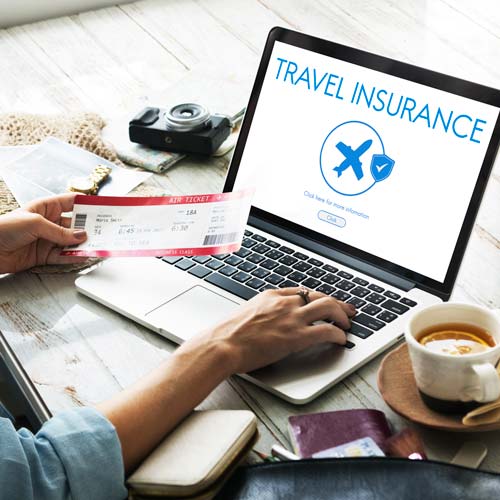Wondering if Cusco, the ancient capital of the Incas, is safe? Worry not.
As the ancient capital of the Incas, Cusco is a population destination for tourists worldwide, especially the ones looking to explore Machu Picchu, one of the Seven Wonders of the World. Despite its bustling streets and vibrant culture, safety is often a concern for many visitors to this Andean City.
I too was worried on my first visit to Cusco. But after staying there for months, I have here to share some insights and practical safety advice to make sure nothing happens to you on your trip and it is as enjoyable as possible.
Let’s go!
Key Takeaways
- Cusco is generally very safe since it is one of the most touristy destinations in Peru. Violent crimes are nearly non-existent.
- However, minor crimes such as thefts and pickpockets are common, especially at night.
- Altitude sickness is the biggest danger in Cusco, and travelers should take extra precautions against it.
Is Cusco Safe?

Generally speaking, Cusco, Peru, is a safe destination for travelers. It has a global crime index of only 42,79, which is quite low. And thankfully, violent crimes against tourists in Cusco are rare! I’ve never heard of anyone get robbed at gunpoint or anything similar the entire time I stayed there.
Cusco is perhaps the most touristy city in Peru because it’s the gateway to world-famous attractions like Machu Picchu and the Sacred Valley. Hence, the Peruvian government wants to protect travelers, and most locals don’t want anything to harm their reputation as a very safe city to visit.
But that’s not to say that violent crime doesn’t happen occasionally because it does, but in most instances, it’s petty crime like theft or pickpocketing.
Even though Cusco is not a dangerous city, it’s best to remain vigilant and not walk alone at night, wear flashy jewelry, or display expensive electronics. In short, keep your wits about you, and leave your valuables in your hotel room, if you can, to avoid unwanted attention!
📚 Read More: How To Get From Cusco To Machu Picchu?
Crime in Cusco
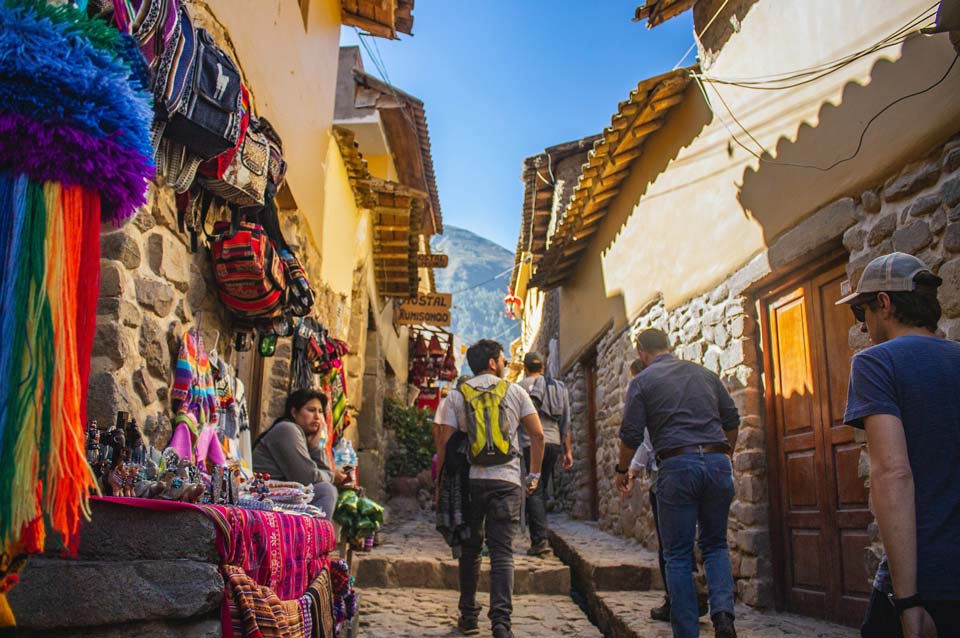
As we have mentioned, crime in Cusco is very low, especially when compared to the rest of the country and the safety in the capital, Lima. This is especially true if you are staying in the historic center, which is heavily patrolled by police and filled with tourists.
According to the US government, Peru has a safety rating of level 2, which is “Exercise Increased Caution”. The scale is out of 4, so two is certainly not considered bad when it comes to safety. This rating is also for the entire country, and safety in Lima is certainly very different than safety in Cusco.
Most of the crimes tourists should worry about are petty crime and thefts, and the occasional scammers when purchasing Peruvian souvenirs.
It is worth noting that civil unrest frequently occurs throughout the country, and occasionally happens in Cusco. When that happens, it is best to stay away from the protests because sometimes they could get a bit violent.
Is Cusco Safe for Solo Female Travelers?
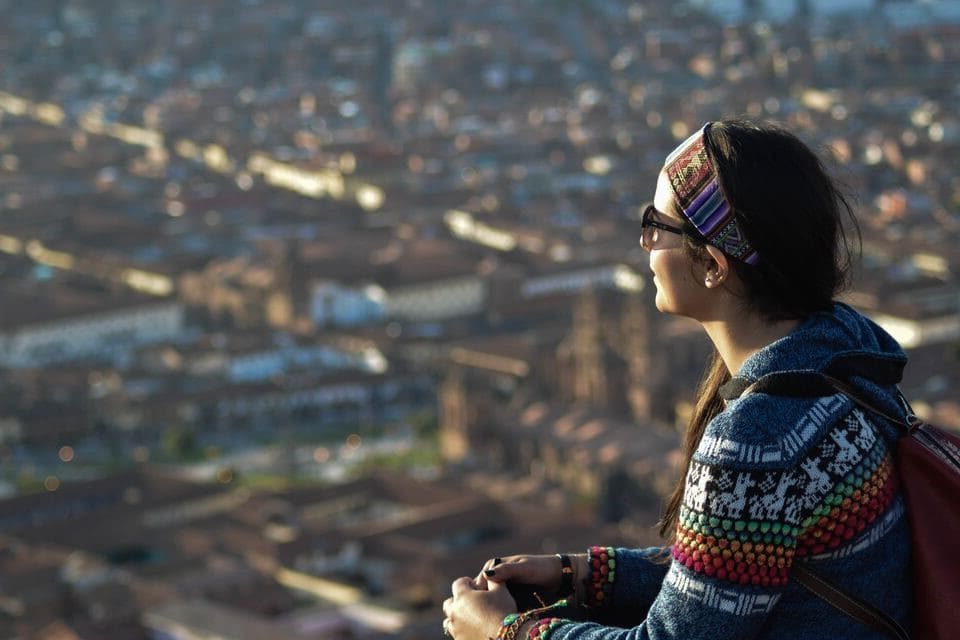
Cusco is considered a safe city for solo female travelers, but that’s not to say that bad things don’t ever happen here because they do. Even in the world’s safest countries, opportunistic crimes (theft, pickpocketing, etc.) happen. And Cusco is no different.
Cusco, and Peru in general, is a very popular backpacking destination in Latin America, thanks to its affordable prices and incredibly rich history and culture. Solo female travelers are abundant in Cusco, which means you won’t stick out if you are one.
Still, there are some precautions you should take as a solo female traveler. Always be aware of your surroundings and try not to walk anywhere alone at night or while intoxicated.
Don’t accept drinks from strangers, especially if you are out at night.
Solo female travelers might get lots of attention when traveling, especially in the form of catcalling. It is best to just ignore those advances or politely decline anything that might make you uncomfortable.
The best safety tip for solo female travelers in Cusco is to find other solo travelers to travel with. It is the best way to stay safe because there is definitely strength in numbers. You can do so by staying in some of the popular backpacker hostels around town, such as Pariwana Hostel or Viajero Kokopelli Hostel.
Is Cusco Safe At Night?
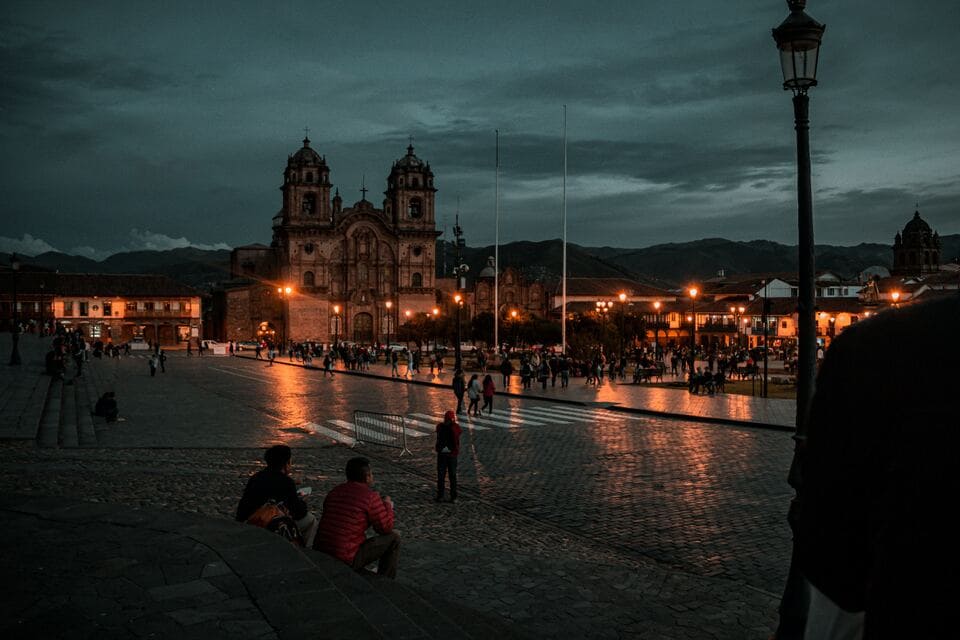
Just like most cities, Cusco is more dangerous at night than it is in the daytime. However, the historic center still remains quite safe, with lots of travelers out enjoying the nightlife of Cusco. For the most part, it is safe to walk around town at night, as long as you remain in the historic center.
If you are out partying at night in Cusco in a nightclub or bar, you might want to take extra precautions. Opportunistic crimes happen frequently because lots of travelers are intoxicated. This makes them easy targets for pickpocketing, which is the most common crime in Cusco.
Pickpocketers in Cusco tend to work in teams. One person will distract you by trying to sell you something, and the other will try to take items from your pockets. They congregate in tourist areas, so try to avoid crowds or travel in a group at night, if possible, as you’re less likely to get robbed.
As with most large cities, try to avoid walking alone at night, but if you must, keep your wits about you, i.e., don’t play on your phone or listen to music via earphones, as you need to be alert.
On the same note, leave your expensive jewelry, flashy camera, or designer handbag in your hotel room, as it will only attract unwanted attention!
Danger of Altitude Sickness In Cusco
Cusco is one of the highest cities in the world. It sits at an altitude of 3,399 meters (11,152 feet) above sea level, which means that the air pressure at this height is lower (i.e., the air is thinner), so you’re more prone to experiencing altitude illness here than, say, in Lima.
There’s only around 65% oxygen in the air in Cusco when compared to sea level, which can make breathing more difficult. Because of the ‘thinner air‘ in Cusco, for every breath you take, less oxygen enters your body.
Your body will slowly adapt to this, and you’ll notice you naturally start to breathe slower and deeper. But this process takes time, which is why we recommend spending a few days in Cusco before doing any major sightseeing in the region.
Drinking plenty of water and avoiding the peak sunshine hours, especially during the summer will also help relieve the symptoms of altitude sickness.
💪 Pro Tip: Avoid alcohol and drugs during those first few days while your body adapts to the altitude in Cusco
Altitude sickness symptoms will usually be felt within 24-48 hours of arriving in Cusco, and these symptoms may include headache, nausea, vomiting, fatigue, and dizziness.
You can ease your symptoms with coca tea, a traditional Peruvian drink made using the dried leaves of the coca plant, which is native to South America. You can find this in most markets in Cusco, or your hotel/hostel should be able to help you out with where to get some!
Natural Disaster In Cusco
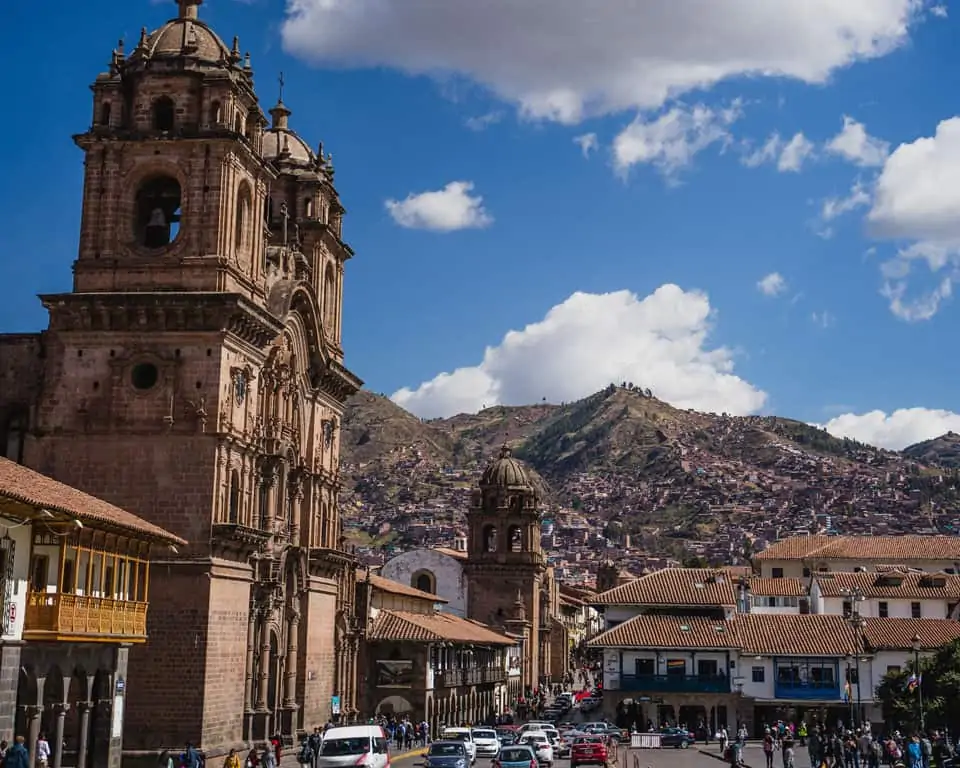
Although rare, natural disasters such as earthquakes and landslides may happen in Cusco. Peru is an active earthquake zone, and although major earthquakes seldom happen here, you still need to come prepared.
The strongest earthquake of the last ten years in Cusco had a magnitude of 7.2, which is classed as a major earthquake. Before that, an 8.4 magnitude earthquake devastated the region in 2001.
Earthquake tremors are frequent in Cusco, and if you experience a tremor or an earthquake, you should make your way to the safe zone, marked with an ‘S’ sign if inside.
If you’re outside, avoid standing under overhead obstructions such as buildings and other areas where objects, like trees or power lines, could fall.
The rainy season in Cusco is from November to May, and during this time, heavy rain can delay flights, cause road closures due to landslides, and sometimes result in the temporary closure of some tourist sites and hiking trails.
📝 Note: Because of the heavy rainfall in the wet season, even the Inca Trail is closed for the month of February!
What Are The Safest Neighborhoods In Cusco?
The safest neighborhoods in this Cusco include San Blas, San Cristobal, and, San Pedro. All these neighborhoods are located inside Cusco’s historic center.
San Blas
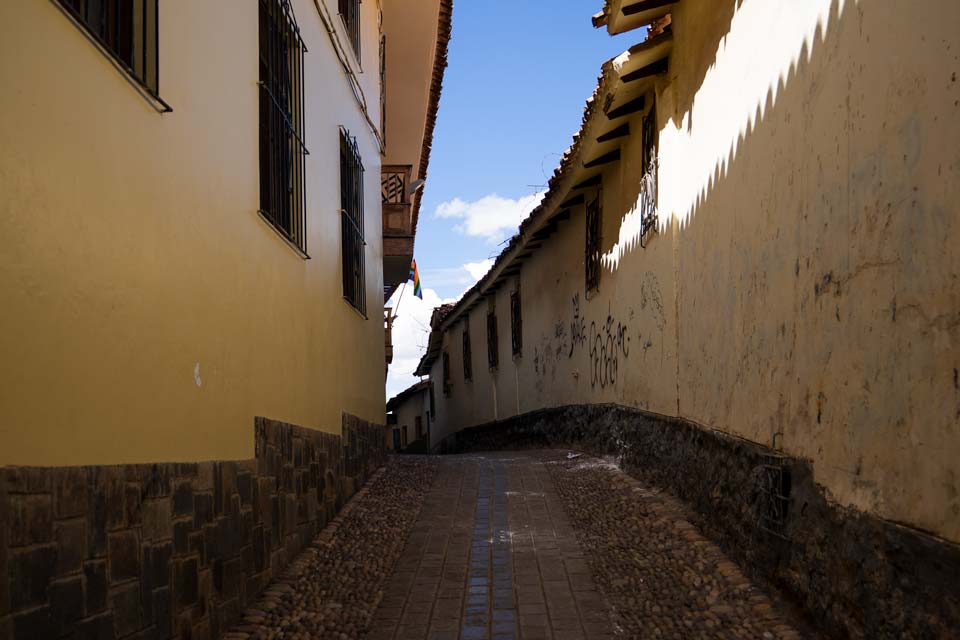
The San Blas neighborhood is, undoubtedly, our favorite and the best area to stay in Cusco. It’s known as the bohemian neighborhood and is home to quirky stores, cute cafes, and restaurants and has an all-around relaxed atmosphere.
It’s also one of the safest parts of Cusco, and violent assault is virtually non-existent, although pickpocketing and other opportunistic crimes may still happen occasionally.
The main square is lined with Spanish colonial buildings, and at the center is a huge fountain around which local artisans sell unique handcrafts daily. There’s a bigger must-visit market held here on the weekends!
While in San Blas, you should also head to the super-photogenic San Blas slope, which starts at Plaza de Armas and ends at San Blas Square. In fact, you will probably recognize this cobbled street backdropped by snowcapped mountains from your Instagram feed.
San Cristobal

San Blas is another one of the safest districts in Cusco for tourists to stay, although you should still be wary of street crime and, thus, avoid wearing valuables on the street.
Located a short walk from Plaza de Armas, it’s a beautiful and authentic neighborhood that’s known for the Church of San Cristobal. For the best view of the city, you can climb to the top of its bell tower! This church can also be used as a reference point – because of its high position, it can be seen from pretty much everywhere in Cusco.
It’s also only a short walk from San Cristobal to Sascayhuaman, one of the most important ancient Incan sites in Peru.
San Pedro

San Pedro is a traditional neighborhood, and it’s one of the oldest parts of Cusco. It’s also considered one of the safest areas of the city; however, the San Pedro market area should be avoided at night time due to a higher risk of street crime.
It is known for its church, the Temple of San Pedro; interestingly, this colonial church was built upon the foundations of a hospital after it was destroyed in an earthquake. Not only is the exterior pretty, but inside, you will find a large collection of paintings from colonial times.
In this neighborhood, you will also find the San Pedro Market. This market offers a unique insight into the traditions and cultures in the city. It’s all hustle and bustle and is a great place to meet the locals. You can buy everything you desire here, from souvenirs to fruit and vegetables and meat!
📚 Read More: 2-Week Peru Itinerary: The Best of Peru
Are Taxis Safe In Cusco?
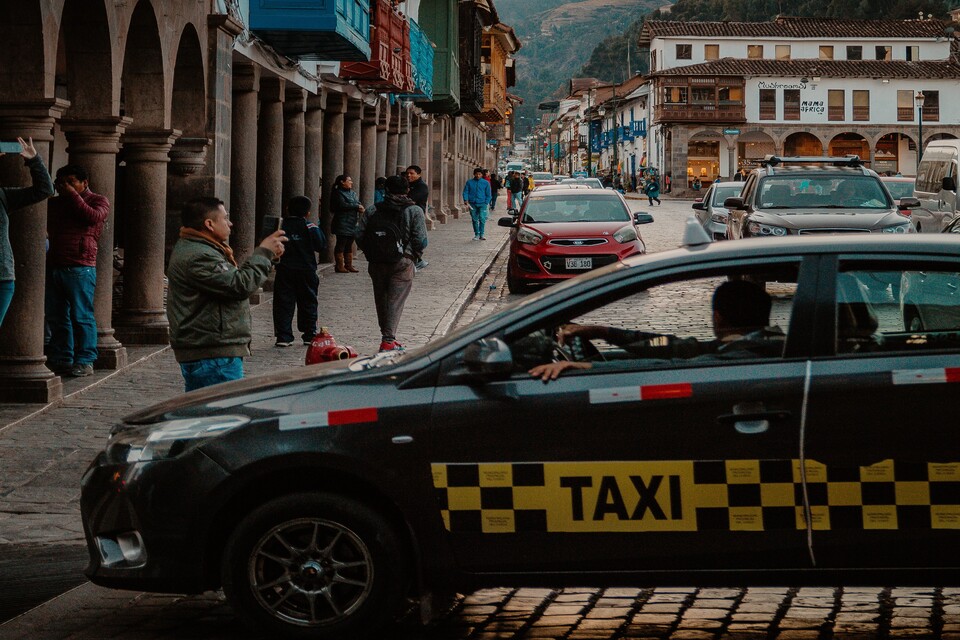
Taxis are a reliable and cheap way to get around Cusco, and for the most part, they are safe, provided you stick to registered taxis or use Uber. Reputable official companies in operation in Cusco include Taxidatum, Taxi Cusco, and Taxi Imperial.
But, as with any major city, there is some risk in using taxis in Cusco. This is particularly true with unlicensed taxis, aka, bogus taxis, which aren’t always easy to spot initially. Exercise caution if you’re flagging down a cab on the street.
So, to ensure you don’t get caught out, check the doors or the car bonnet for a sticker that indicates which taxi company he/she is working for; if you can’t see such a sticker – AVOID.
Young women visiting Cusco should use extra caution and ideally ask your hotel or hostel to call you a cab. If you’re out in the city, try not to hail a cab down; instead, phone to book a taxi or ask a restaurant or store to call you one.
We will also add that most taxis in Cusco don’t have obvious taxi markings, i.e., most look like regular cars. The small yellow cabs in Cusco are an exception and definitely do look like ‘cabs!’
At Cusco airport, use only licensed taxis, which can be found in the airport car park; don’t go outside the airport boundaries as this is where bogus taxi drivers operate.
Safety Tips For Traveling Cusco
- Use Official Taxis or Uber – As with any city worldwide, we strongly advise using only licensed taxis in Cusco. You can also order an Uber in Cusco, though they are not as readily available as they are in Lima.
- Learn a Bit of Spanish – Being able to speak even just a little bit of Spanish will be a big advantage in Cusco. It will help you adapt to your local surroundings better, as you will be able to read signs, warnings, and directions. And if you get lost or need help, you can ask for help easily.

- Take Altitude Sickness Seriously – Altitude sickness can ruin your vacation, and that’s why it’s so important to take it seriously. Cusco is a very high-altitude city, so it’s essential you take a few days of ‘rest’ at the start of your vacation here to allow your body to acclimatize. You should also drink plenty of water, avoid peak sunshine hour, and stay clear of alcohol during those first few days.
- Purchase Travel Insurance – Many travel insurance policies protect against lost or stolen personal belongings or cash, as well as that most policies will compensate you for delayed or canceled flights and lost luggage. Travel insurance may also cover you for any medical emergencies, and because you are in a high elevation, they could happen even if you take the utmost precautions.
- Be Mindful of Your Possessions – Be alert always and try to keep a hand on any valuables (handbag, camera, etc.) when you’re out in Cusco. Try not to get distracted, as many pickpocketers work in teams, i.e., one will distract you while the other picks your pockets.
- Don’t Flash Your Fancy Electronics and Accessories – Use common sense – don’t flash expensive jewelry or electronics when you’re out and about in Cusco. Keep them hidden or secured so they can’t be snatched away. If you’re heading out at night, leaving your valuables such as your passport and wallet in your hotel safe is best.
- Avoid Political Protests – Stay safe in Cusco by keeping away from protests, and demonstrations as these can sadly turn violent really quickly. There is a global terrorism risk in Cusco as The Shining Path terrorist group is active here. Tourists tend not to be direct targets of this group, but they may find themselves in the wrong place at the wrong time.
Cusco Safety FAQs
Is it Safe to Fly from Lima to Cusco?
Can You Drink The Tap Water In Cusco?
Is Cusco Safe to Walk Around?
Is There Uber in Cusco?
How Many Days in Cusco to Spend?
Is Machu Picchu Safe?
What Areas Should You Avoid In Cusco?
Is Cusco Expensive?
Is Cusco Cheaper Than Lima?
So, Is Cusco Safe?
If you have made it to the end of the article, then you’ll know that Cusco is a relatively safe city. As long as you take safety precautions, be vigilant when going out, and be cautious with the altitude, then you’ll most likely have a safe and pleasant trip to the gateway city of Machu Picchu.
Disclaimer: Some of the links above are affiliate links. That means if you book or make a purchase through the links, we will earn a small commission at no extra cost to you! The money will help run this site! Thank you!

